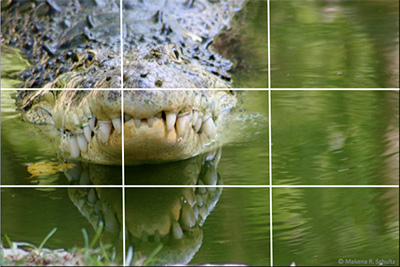Composition tools for taking photographs – Part 2
A few more basic photography composition techniques and tools to help your youth photovoice participant tell their story in the most effective way possible.

In "Composition tools for taking photographs – Part 1," you learned three new photography composition tools to add to your visual storytelling tool kit: point of view, light, and line and pattern. In Part 2, we're helping you add three more. Now remember, all of the tips and tools mentioned in this article and in the previous article in this series are just suggestions. They're meant to help you be intentional about your photography and empower you to build the best photo story you can. Like all art and creative expression, there is no right or wrong; as long as you were intentional and critically conscious as you made decisions about your pictures.
These next three tools are a little bit more abstract. This means they can be a little bit trickier to understand, but also means they can be used creatively to make an even bigger impact on your photograph. Background, rule of thirds and balance are three tools that relate more to how a viewer or onlooker might interpret your visual story.
- Background. Being conscious of what is in the background of a photograph can do a lot for the story it tells. Whatever is behind or surrounding your photo can help provide context or "set the stage" for the story you are trying to tell with your photo. Not paying attention to what's in the background can have the opposite affect; it can detract or distract from the story. It can even confuse people about the story, inspiring them to ask questions like, "Why is that man standing with a purse?" or "Why is there a tree branch growing through her head?" Keep the background in mind and you'll only help your storytelling ability.
- Rule of thirds. Imagine a tic-tac-toe board. Now, imagine that board drawn on top of your photograph or on the viewfinder of your camera. We naturally want to center the subject in the middle of our photographs. Instead, try moving your subject to one of the points on your imaginary tic-tac-toe board where the lines intersect. There are four possible intersection points, and each could provide varying visual interest as well as additional context (in more captured background). All of the tools here are exactly that, tools. Though this tool is called a "rule," use it in your tool kit just like any of the other suggestions. Consider using this tool along with balance.
- Balance. Think about a two sided scale and trying to balance that scale with different objects. That's what balance is like in a photograph, and it can be used in two ways. The first is to think about the space in your frame. Consider balance in this first way like symmetry; if you put something on one side of the frame, try putting something else on the other side. The second way to use balance is the creation of action, or what your eye looks at the whole frame (when used with the rule of thirds). In this use of balance, you have to think about the perceived action of your subject and put them at the opposite side of the frame than their "action." For example, if your subject was looking or moving to the right, you would want to place them at the left side of the frame in your photo. This way, when viewers see the subject on the left, they can follow the subject's gaze across the photo to the opposite side of the frame. Alternatively, if you put the right-looking subject on the right side of the frame, a viewer would see the subject and follow their gaze to the right edge of the frame; often subconsciously ignoring the left/rest of the photo.

This is an example of the rule of thirds. You can see the overlay of the three-by-three grid (usually described as a “tic-tac-toe board” or a hashtag), and that the subject of the photo is at one of the intersection points between a vertical and horizontal line.

This photo is balanced because the girl pictured is facing (and moving) to the right side of the frame. By placing her on the left side, it allows the observer’s eye to travel all the way across the picture.
After considering these and the three tools mentioned in the previous series article, think about how someone who doesn't know you and isn't from your community might interpret your photograph's story. You won't always be available to verbally share your intended story, so using these tools to be intentional and mindful will help. Additional articles in this series on visual literacy and reflective writing will help you with other tools to make sure people understand your photo's intended visual story even when you're not there.
Michigan State University Extension and the Michigan 4-H Youth Development program help to prepare youth as positive and engaged leaders and global citizens by providing educational experiences and resources for youth interested in developing knowledge and skills in these areas. To learn about the positive impact of Michigan 4-H youth leadership, civic engagement, citizenship and global/cultural programs, read our 2015 Impact Report: “Developing Civically Engaged Leaders.”
Other articles in series
- So you want to take a selfie? Use photovoice to tell your story
- Composition tools for taking photographs – Part 1
- Visual literacy: A place to start when writing about your photovoice or photography project
- Reflective writing in photovoice: Why writing about your visual story is important
- Extra! Extra! See all about it! Concluding photovoice with a community showcase



 Print
Print Email
Email


